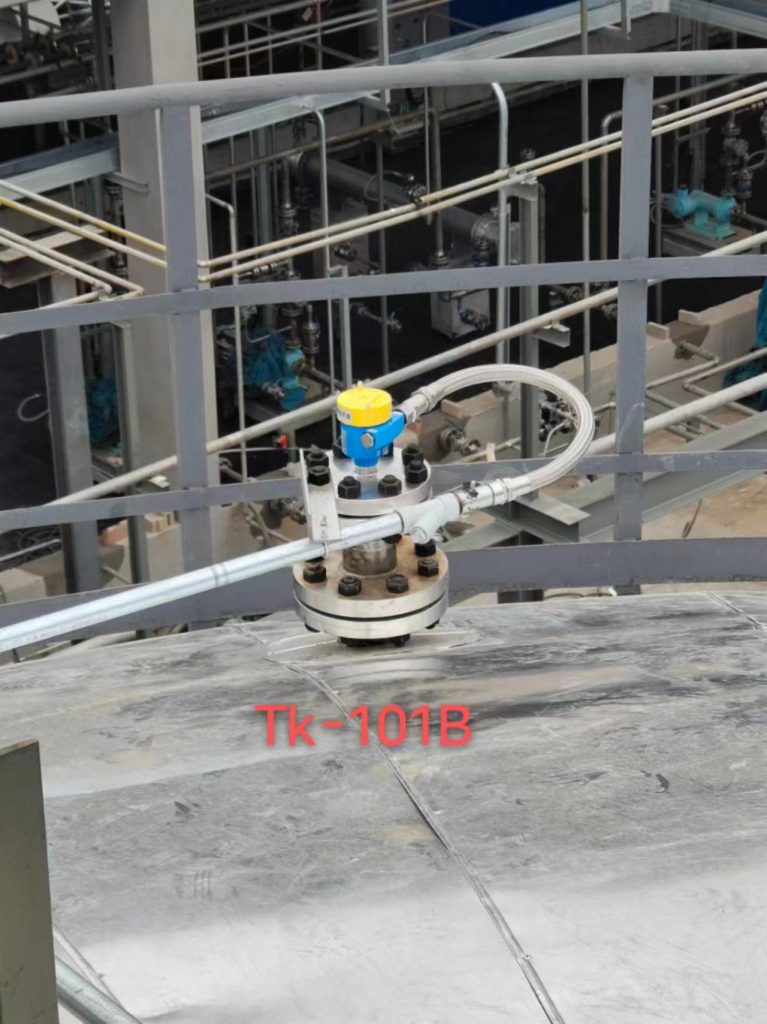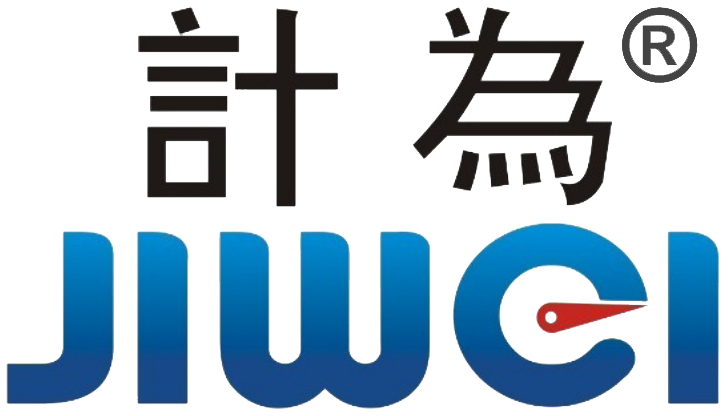Vibronic Level Switch in Floating Roof Tanks: Jiwei’s 6-Meter Long Level Switch
Introduction
Floating roof tanks play a critical role in petroleum and chemical storage, where safety and operational stability are closely linked to accurate and reliable level measurement. Liquid level measurement is a core component of floating roof tank automation, especially the performance of the level switch, which directly affects the safe and smooth operation of the roof’s lifting mechanism. Due to the large size of floating roof tanks and the heavy, complex structure of the roof, level measurement environments are challenging. Jiwei Automations‘ independently developed 6-meter long vibronic (tuning fork) level switch offers outstanding high-temperature resistance and robust mechanical design, making it an optimal solution for floating roof tank level measurement. This article analyzes the technical advantages and practical value of this product through real-world application and literature review.

Technical Challenges in Floating Roof Tank Level Measurement
1. Massive Tank Size and Roof Weight
Floating roof tanks, used for storing large volumes of petroleum and chemical liquids, feature substantial structural dimensions—heights often exceeding 20 meters and diameters reaching or surpassing 30 meters. The roof weight typically ranges from 300 to 500 tons, with complex structures and high load-bearing requirements. The roof floats to follow the liquid level, and its movement is directly controlled by the level measurement system. The level switch must have high mechanical strength to withstand roof weight and vibrations during lifting while ensuring stable signal transmission.
According to Zhang and Li (2021), the heavy roof increases installation and maintenance difficulty for level measurement devices. Measurement errors can cause roof jamming, mechanical fatigue, or structural damage, seriously threatening operational safety (Zhang & Li, 2021).

2. Long Measurement Distance and Harsh Field Conditions
Floating roof tank level measurement requires probe lengths exceeding several meters, far beyond conventional tuning fork level switch limits. The tank’s contents often include flammable and volatile liquids like crude oil, light oil, or chemicals, under conditions of high temperature (up to 400°C), high pressure, corrosive gases, and dust interference. Mechanical vibrations and shock waves generated during roof movement further demand excellent vibration and shock resistance.
To ensure measurement reliability, level switches must be certified explosion-proof, withstand high temperature and corrosion, and employ high-strength materials and designs for stable long-term operation in harsh environments (Li & Zhang, 2017).

3. Safety Risks from Measurement Errors
Measurement errors beyond design tolerance may cause abnormal roof movement, including jamming, local deformation, or collapse, leading to structural damage and potential accidents. A 2019 safety risk report from China National Petroleum Corporation Safety Research Institute identified floating roof tank level abnormalities as a key cause in multiple major accidents (CNPC Safety Institute, 2019). Roof failure risks personnel safety and can trigger fires, explosions, and environmental pollution.
Economic Losses
- Equipment Repair Costs: Repair of a single floating roof tank can cost several million RMB; tank body damage incurs even higher expenses.
- Production Downtime: Shutdown of production lines linked to the tank results in daily losses of 500,000 to 1,000,000 RMB.
- Environmental Remediation: Oil spills cause environmental cleanup and compensation costs reaching tens of millions RMB.
- Legal Penalties: Companies may face heavy fines and compensation due to environmental and safety violations.
A large refinery accident study showed that safety incidents caused by level measurement device failures resulted in average direct economic losses exceeding 50 million RMB (Wang, 2020).

Necessity of High-Quality Level Measurement Equipment
Given these risks, the petroleum and chemical industries demand level measurement devices with stringent performance and quality standards. Companies prefer products certified by authoritative explosion-proof bodies, with high temperature resistance, strong mechanical durability, and stable operation. For high-risk, high-investment systems like floating roof tanks, low-end or uncertified devices are unacceptable.
High-quality vibronic level switches ensure measurement stability and accuracy, reduce false alarms, and resist environmental interference, thereby safeguarding roof movement control systems. Using advanced technology and strict quality management brands has become industry standard, critical for production safety and risk mitigation (Qi, Liu, & Sun, 2018; American Petroleum Institute, 2016).
Technical Advantages of Jiwei’s 6-Meter Long Vibronic Level Switch

- Extended Probe Design: Breaks traditional length limits, meeting long-distance measurement needs of floating roof tanks.
- High Temperature Resistance: Rated up to 400°C, leading domestic performance for high-temperature tank environments.
- Robust Mechanical Construction: Made with 316L stainless steel, highly resistant to vibration and shock for long-term stable operation.
- Authoritative Explosion-Proof Certification: Complies with highest national standards, ensuring safety and reliability.
- Stable Mechanical Vibration Principle: Uses vibronic tuning fork vibration to detect material presence, avoiding electronic interference for high measurement stability.
- Compact Design & Easy Maintenance: Simplified structure allows easy installation and reduces maintenance cost, extending service life.
Case Study
A large refinery implemented Jiwei’s 6-meter long vibronic level switch on a 20-meter-high floating roof tank. Since commissioning, the device has operated reliably with accurate level readings, significantly reducing roof movement risks caused by abnormal liquid levels. On-site feedback confirms that the product successfully avoids safety hazards from probe mechanical fatigue or false alarms, ensuring continuous and safe production.
Conclusion
Floating roof tank level measurement faces multiple challenges, including large roof structures, high temperature and pressure, and harsh environments. Jiwei’s 6-meter long vibronic level switch meets these stringent requirements with its extended probe, high-temperature tolerance, robust build, and certified explosion-proof safety. It effectively safeguards floating roof movement, minimizes safety risks, and stands as an ideal solution in the floating roof tank level measurement field
References
American Petroleum Institute. (2016). API Recommended Practice 2350: Overfill Protection for Storage Tanks. API Publishing Services.
China National Petroleum Corporation Safety Research Institute. (2019). Safety Risk Analysis Report of Floating Roof Tanks [Technical report]. Beijing, China: CNPC Safety Institute.
Li, J., & Zhang, H. (2017). Research on Measurement Accuracy of Radar Level Meters in High-Temperature Environments. Journal of Measurement Science and Instrumentation, 38(10), 921–927. https://doi.org/10.3969/j.issn.1006-2207.2017.10.012
Qi, J., Liu, H., & Sun, X. (2018). Application of Tuning Fork Level Switch in Chemical Storage Tanks. Instrumentation Technology, 37(4), 78–83. https://doi.org/10.3969/j.issn.1000-821X.2018.04.015
Wang, P. (2020). Accident Statistical Analysis of Level Measurement Devices in Oil Refineries (Master’s thesis). East China University of Science and Technology, Shanghai, China.
Zhang, W., & Li, Q. (2021). Study on Level Measurement Technology for Floating Roof Tanks. Petrochemical Automation, 50(6), 45–52.

